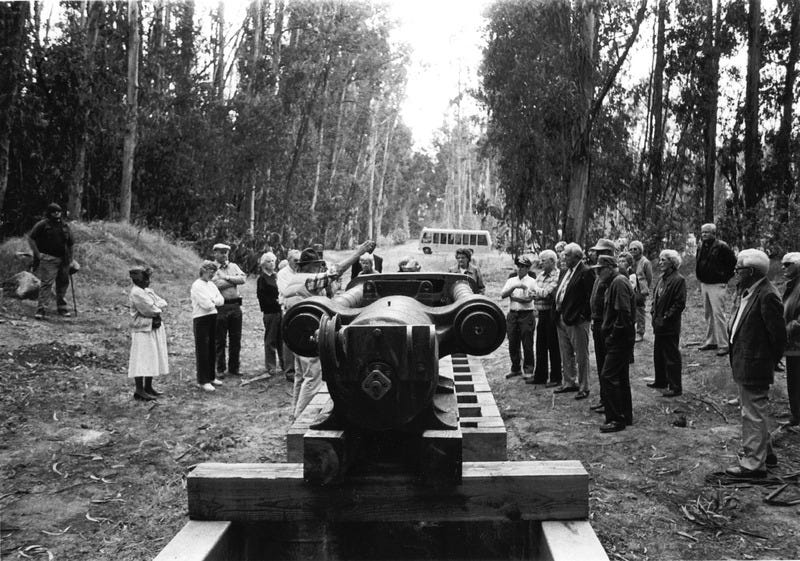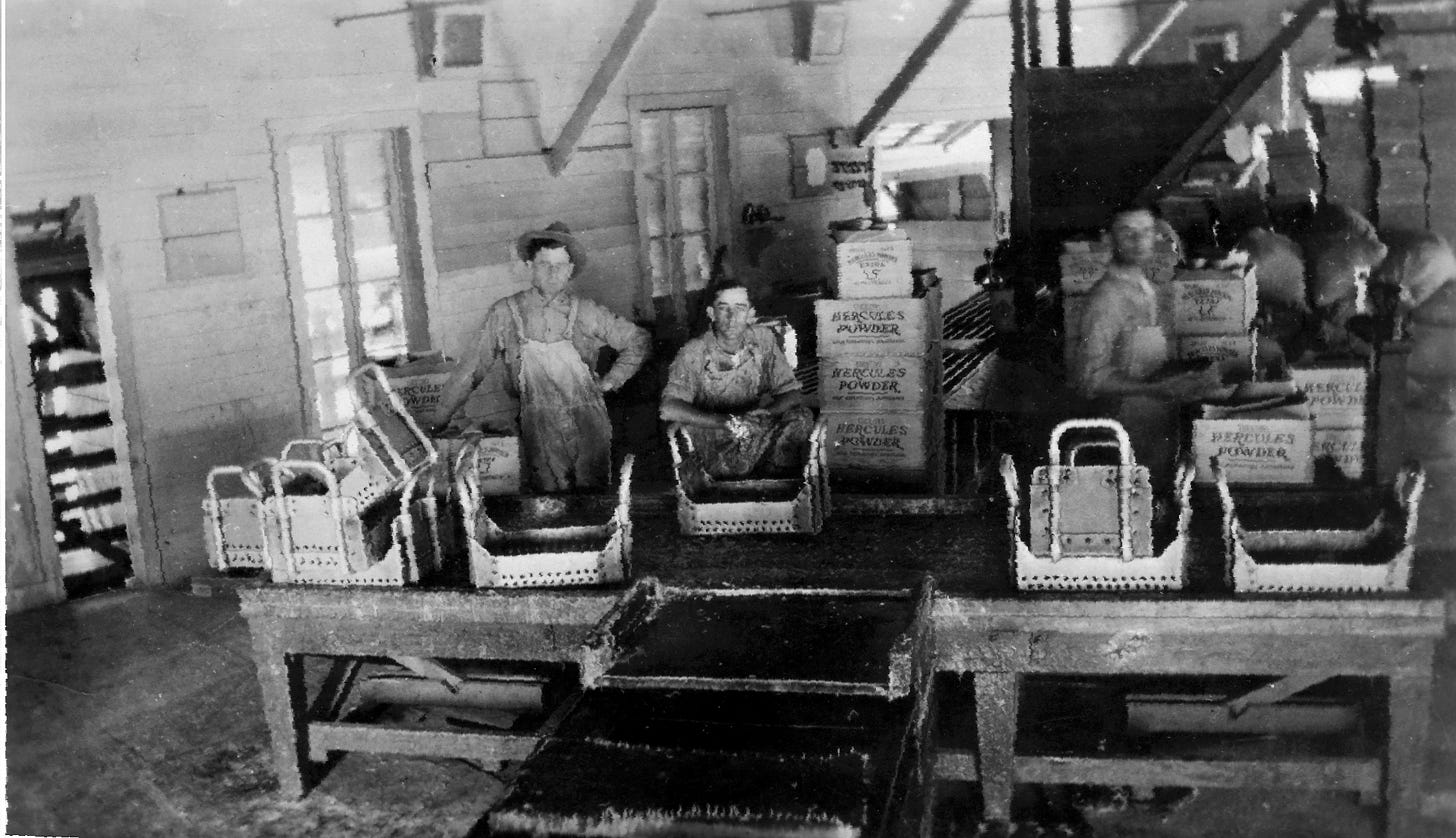The Hercules Powder Press
A welcome, an introduction, and a brief description of an actual powder press.
Hello, darlings! Welcome to my first newsletter (ever).
I am an anthropologist and author investigating the culture, history, and science of explosives. This newsletter is a place for me to share my creative work, research, and writing journey. In addition to behind-the-scenes peeks at my writing process and book recs, I want to curate a collection of stories and objects I find during my work. The big focus is on my next book, Dynamite Empire: The Power that Changed America and the World, to be published by Johns Hopkins University Press, but this newsletter will have a broader scope than just one book about dynamite. Explosives are the most powerful things humans create, and I’m fascinated by how we learn to manage this creative and destructive material.
Why is the title of my newsletter The Powder Press?
A powder press is a machine that compresses explosive material into denser, safer, and more efficient packets. This newsletter is my “powder press” to publish small but compelling packets of history, science, and culture.
A few miles from my home in Oakland, California, I can visit the remains of an old powder press used by Giant Powder, later part of Hercules Powder and Atlas Powder, at its Point Pinole factory. A press (but not this exact one, which is on loan) was used here from 1925 to about 1940. The press has a huge, heavy black barrel through which a plate is pushed under unimaginable pressure. Workers at the factory mixed fresh, wet gunpowder into wheel cakes. They carefully inserted the cakes into the barrel to be compacted into dense black pucks that were more efficient and safer to handle. This factory was part of what was once the Dynamite District, a crescent of explosives factories that circled the San Francisco Bay from 1868 to about 1960.

The press at Point Pinole is, as far as I know, the only remaining piece of equipment in the entire Dynamite District. Over the nearly hundred-year history of the District, all of the factories blew up, were rebuilt, blew up again, and so on, to leave little behind. The press is an incredibly durable artifact of a history that literally explodes.

Why does this history matter today?
The United States is the leading global manufacturer of explosives for both civil and military use, with the most expensive arms stockpile and the broadest global reach. Americans use more explosives per capita than any other nation—not just for war but also in civil engineering, farming, manufacturing, construction, and demolition. At the last national count, the US used four and a half billion pounds of explosives annually in the civil sector alone. That figure is from 2015 when the US population was about 320 million. If I’m doing my math right (not my strong skill), that’s fourteen pounds of industrial explosives per person.
This year, the Biden administration increased its military budget by $8 billion, in part to fund the explosives it plans to send to Israel and Ukraine. The US government is the largest supplier of explosives to Israel. The US is the world’s largest supplier of explosives, period. American diplomacy is shaped by this massive stockpile and political choices about what and with whom to share it. Where did this all begin? When did the US start manufacturing, stockpiling, and selling so many explosives?
1868.
That’s when Giant Powder opened its first dynamite factory in the San Francisco Bay Area. One of those Giant factories was at Point Pinole, where sits that old, heavy powder press. Giant Powder was the first American manufacturer of dynamite, and dynamite was the first commercially viable high explosive. High explosives are a category of powerful nitrogen compounds developed in the middle of the 19th century that now form the foundation of nearly all modern explosives. The American military arsenal—cluster munitions, torpedoes, rockets, missiles, shells, grenades, mines, and so on—is mostly made of high explosive materials that are descendants of dynamite.
In 1867, when dynamite was first put on the market, the total global annual output was only eleven tons. Then, in 1868, the first Giant factory opened and produced an astonishing half a ton a day—beating the previous year’s figure in six days. By the end of the century, the factory at Point Pinole had become the largest dynamite factory in the world, and during World War I, would be the largest American producer of TNT (a high explosive commonly used in bombs). Over the last hundred years, the US has steadily increased its control of this material, and today accounts for nearly half of the global explosives market.

“Printers’ ink is the greater explosive.”
In the poetry room at City Lights Bookstore in San Francisco, above the bookshelves selling copies of Allen Ginsberg’s Howl, hangs a hand-painted sign: “Printers’ ink is the greater explosive.” Lawrence Ferlinghetti, the owner of City Lights, painted those words while embroiled in a censorship battle over his right to sell Howl. He won his case at the US Supreme Court in 1957. I imagine that Ferlinghetti was inspired by the fate of his neighbors in the Dynamite District: The last explosives factory at Point Pinole was shutting down just as the Beat movement was waking up. His words spoke to the political role of poets, the growing anti-war movement, and the way that words can shake a nation loose.
Printer’s ink is the greater explosive. This is also my hope for this newsletter, The Powder Press. Your subscriptions will help to fund my research trips, buy me supplies, and pay for library access to resources I need for my work. I promise to share what I find with you.
Next up, I’ll be traveling to Mount Rushmore, South Dakota, to learn about the lives of the powdermen who used dynamite to carve four presidential portraits into the mountain. A powderman is the member of a demolition crew who oversees the explosives. Stay tuned: I’m excited to learn more about this incredible history and how it shapes our political present.
In Other News…
I interviewed my fellow anthropologist and poet (anthropoet) Adrie Kusserow for the latest issue of The Common Magazine. We talk about writing, ethnography, and how poetry enriches our understanding of place. Adrie shares:
“Poetry helps me hold the complexity of human experience and the distinct flavor, ethos and landscapes of particular places. Rhythm, metaphor, image, music, sound repetition all of these take me to places of much greater subtlety, nuance, and truth than conventional writing or conventional conversation. Sometimes when I emerge from the world of a poem, the “real” world feels jarringly generic, simplistic, and stereotypical.”
You can read the rest of this beautiful interview here.
—Leah.




